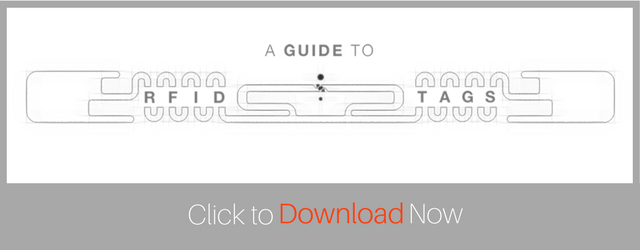UHF RFID Tag Communications: Protocols and Standards
Introduction
The International Standards Organization (ISO) and EPCglobal are two organizations that work together to approve standards and protocols in order to provide universal specifications for RFID equipment. By creating global standards, these organizations enable the possibility of worldwide adoption of UHF RFID. Once ratified, protocols define communication methods approved with the air interface in conjunction with the operating frequency, channel bandwidth, frequency hop rate, etc.
The EPCglobal and ISO standards that are familiar today are largely due to the strides made by the Auto-ID Center from 1999 to 2003. The Auto-ID Center was, a non-profit organization made up of leaders in the RFID industry, and backed by large corporations like Walmart. In 1999 the Auto-ID Center created the first EPC standards as well as their own air interface protocol, both instrumental in attempting to commercialize UHF RFID. The other reason that the Auto-ID Center was so important is because it transitioned into two separate organizations: EPCglobal took over the commercialization of EPC technologies, while Auto-ID Labs continued the research and development role of the Auto-ID Center.1
EPCglobal & the International Standards Organization
Most RFID tags and barcodes that contain an electronic product code are governed by standards and guidelines created by EPCglobal. EPCglobal created the standard format for the EPC (Electronic Product Code) number, which includes a header, unique EPC identifier, and a filter value. The organization also developed the standards for Class 1 Gen 2 tags, which were ratified by the ISO to become ISO 18000-6C. Below is a chart of all the tag classes currently recognized by EPCglobal.
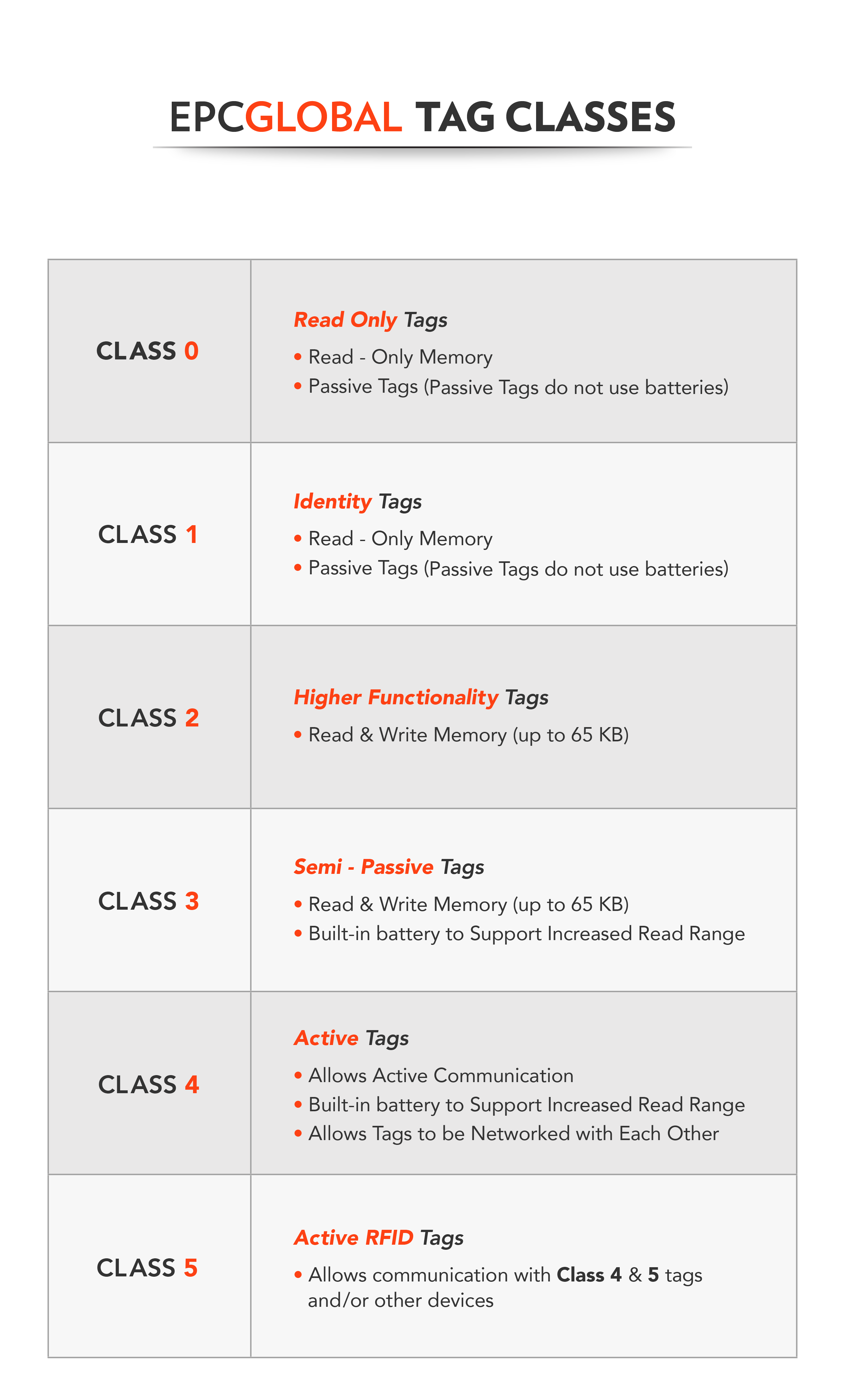
All of the classes set by EPCglobal are approved by the ISO and the World Trade Organization ( WTO). UHF RFID tags use the air interface protocol ISO 18000, a protocol developed to describe reader and tag communication specifications implemented to encourage universal adoption. The importance of this lies in the regulations put in place under the protocol describing the approved communication methods between tag and reader. Below is a chart that lays out the 7 parts of protocol 18000 and what type of technology they affect.
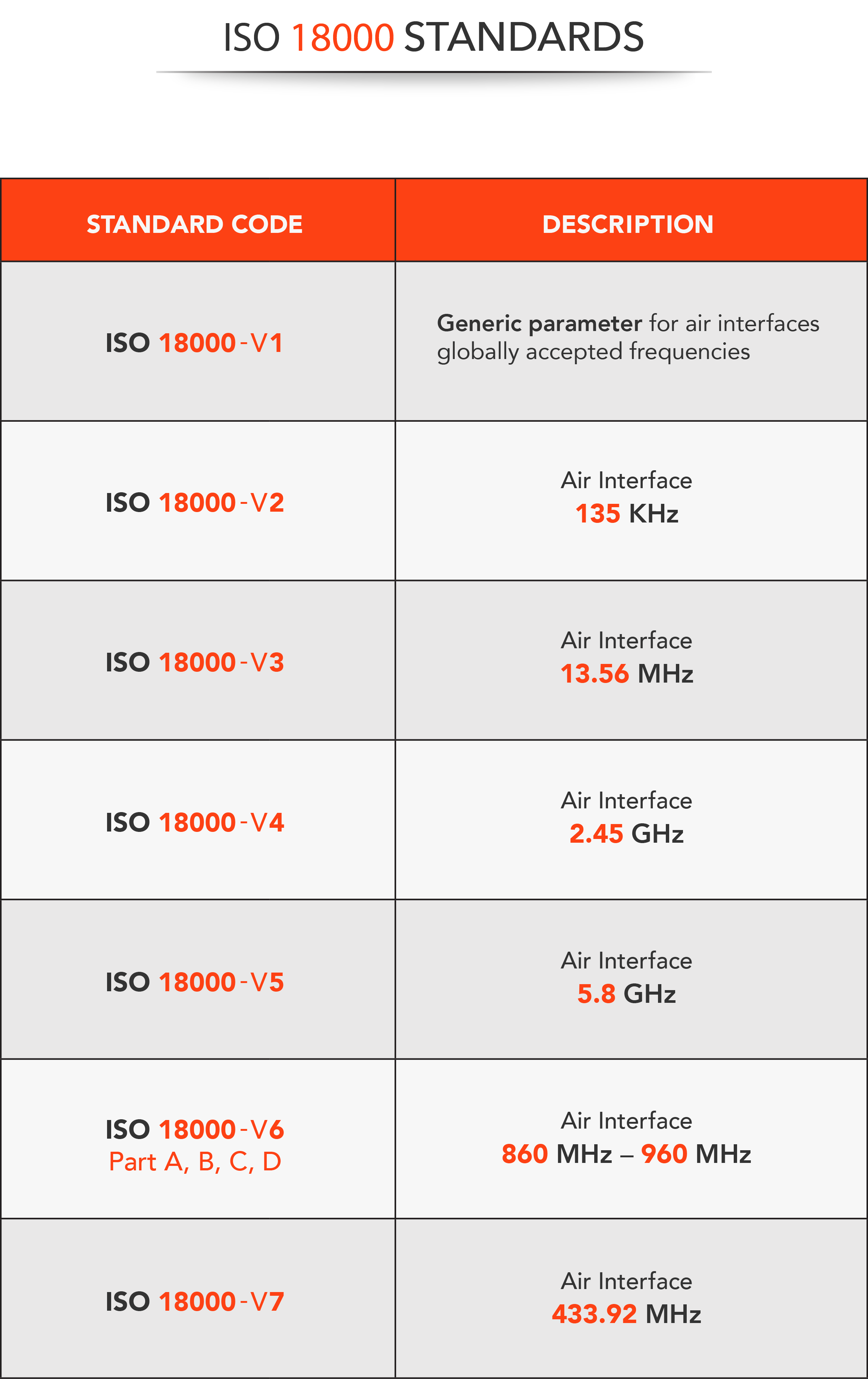
ISO 18000-6C
ISO 18000-6C describes the communication standards set for UHF Class 1 Gen 2 ITF or Interrogator-Talks-First RFID readers and tags. ITF RFID systems are characterized by the tag modulating its information and backscattering to the reader (or interrogator) only after the reader sends the command.
ISO 18000-6C also defines three other parts of reader-tag communication: how the information is coded, how it is modulated, and the anti-collision protocols used. ISO 18000-6C states that UHF Passive systems are ITF and use Pulse Interval Encoding, Amplitude-Shift Keying (ASK), and Q-algorithm (a form of slotted ALOHA).
- Encoding or Bit-Coding
- Pulse Interval Encoding (PIE) – Reader to Tag Communications
- Miller Encoded Subcarrier or Bi-Phase Space Coding (FM0) – Tag to Reader Communications
- Modulation
- Amplitude-Shift Keying (ASK)
- Anti-Collision
- Q-Algorithm
Bit-Coding & Modulation
Pulse Interval Encoding (PIE) is used in Class 1 Gen 2 (ISO-18000-6C) equipment for the reader to tag communication and describes the way a message is encoded in preparation to be sent from the reader to the tag. PIE, similar to Morse Code, uses long and short pauses to represent a “1” or a “0”. A longer pause indicates a “1” while a shorter pause indicates a “0”. PIE, in ISO-18000-6C, works in conjunction with Amplitude Shift Keying (ASK), which describes how the information is modulated. ASK works by changing the amplitude of the wave in order to represent digital data. Below is a graphic showing a signal that was encoding using PIE and modulated with ASK.
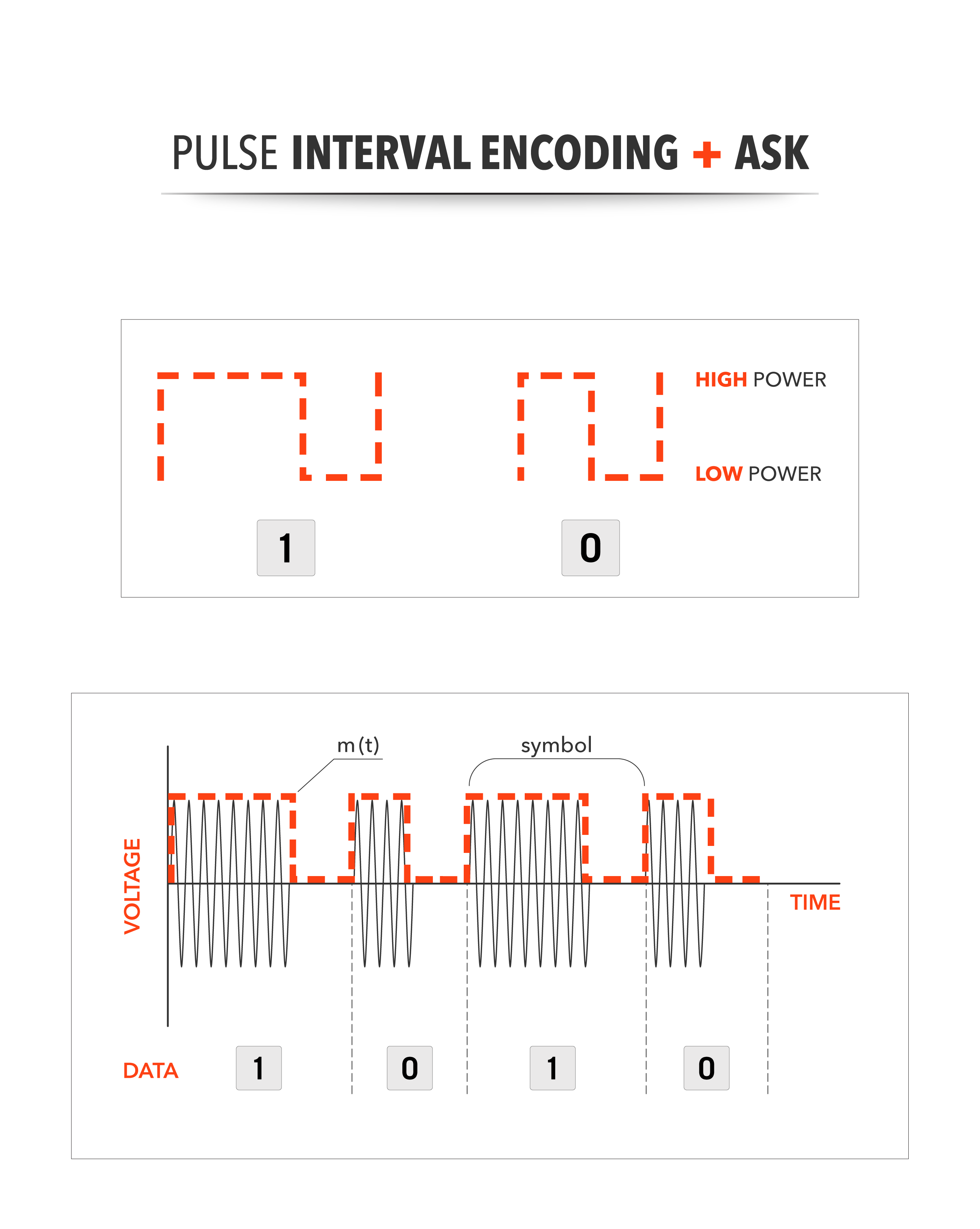
Miller Encoded Subcarrier or Miller ES is part of the Miller Family of bit coding. The Miller family of bit coding is characterized by transitions instead of pauses like those seen in Pulse Interval Encoding. To indicate a “1”, there is a transition in the middle of the bit and to indicate a “0” there is no transition. It is important to note though that if there are two zeros in a row, there is a transition in between.
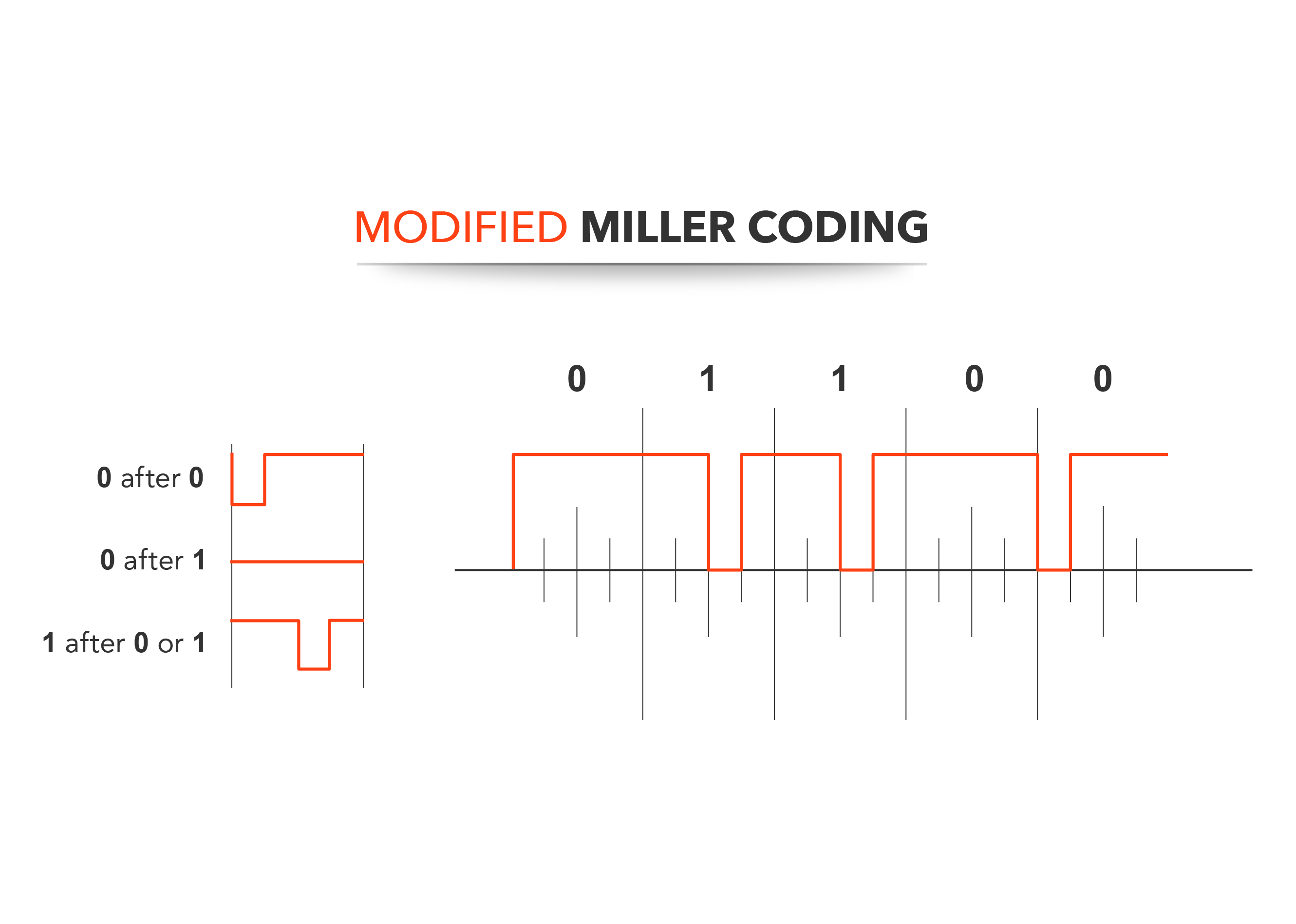
Bi-Phase Space coding or FM0 is part of the Bi-Phase family of bit coding. FM0 bit coding is characterized with transitions, similar to Miller ES. To indicate a “0” with FM0 coding there are three transitions: one in the start, one in the middle, and one at the end. To indicate a “1” there is just one transition at the start.
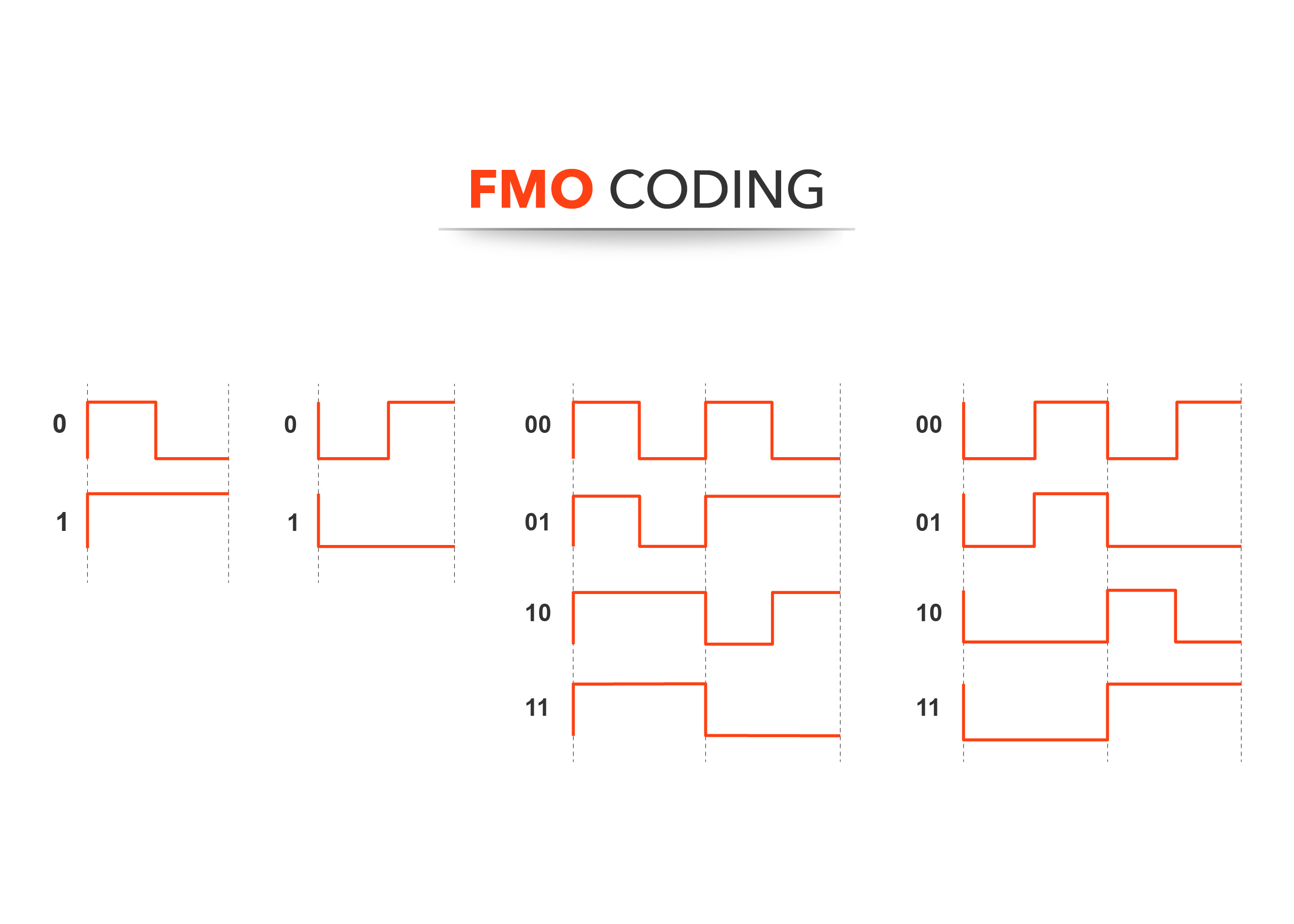
Anti-Collision
Anti-collision protocols are used to prevent collisions from happening during inventory counts. If two tags respond at the same time to a reader, the reader is not able to read either due to the collision. If anti-collision algorithms are not employed by the reader, reading RFID tags in a room with 2 or more tags would be almost impossible. The Q algorithm, sometimes called Q-protocol or adaptive Q algorithm, is active on Class 1 Gen 2 UHF RFID readers and tags. This is a derivative of a prior algorithm called Slotted ALOHA.
These algorithms are based on the principle that during an inventory count, the interrogator breaks up the inventory into rounds (also called frames) and then asks the tags to pick a number between a certain set, 0-15 for example. The interrogator then starts to count down from the highest number of the set and each number it counts is considered a ‘slot’. The tags, meanwhile, select a random 16-bit number and use the last digit(s) as its Q-value or number between 0-15. When the tag hears the reader respond with its selected random number or Q-value, it responds with its 16-bit random number.
Three outcomes can arise in each slot: tag reply, collision, or no reply. If there is a single tag that replies, the reader accepts the reply by sending an ACK command and repeating the random 16-bit number. When the tag receives the ACK command, it sends the reader its EPC number and is considered inventoried. If there are collisions or no tag replies, the interrogator will complete an additional inventory round until all EPCs are inventoried. This is a very simplistic way to understand slotted ALOHA-type algorithms; for more in-depth knowledge please consult A Novel Q-algorithm for EPCglobal Class-1 Generation-2 Anti-collision Protocol
Conclusion
For more information on EPCglobal and ISO standards and protocols and how they affect RFID hardware and tags, contact us or comment below.
For more information on all things RFID, check out our RFID resources page and our YouTube channel.
To learn more about RFID tags, check out the links below!
1 RFID Journal. Frequently Asked Questions. https://www.rfidjournal.com/faq/show?98 (Full details to come for citing)
2A Novel Q-Algorithm for EPCglobal Class-1 Generation-2 Anti-collision Protocol. Wen-Tzu Chen and Wen- Bin Kao. http://waset.org/publications/14783/a-novel-q-algorithm-for-epc-global-class-1-generation-2-anti-collision-protocol
RFID at Ultra and Super High Frequencies. Dominique Paret.
